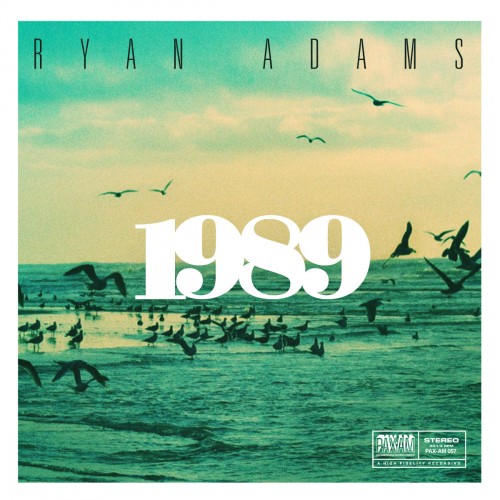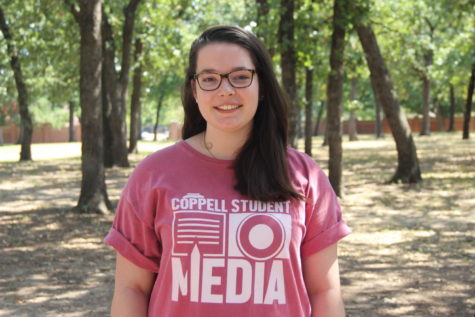Adams’ 1989 sings a different tune

©2015 Pax-Am Records. All Rights Reserved.
October 13, 2015
By Elena Gillis
Staff Writer
@elenamg24
Taylor Swift has continuously proven herself to be a next-level artist, but what happens when established indie artist Ryan Adams puts his spin on it? Adams has taken Swift’s most recent album, 1989, and made it into a chilling collection of tracks with emotion almost the polar opposite of Swift’s approach.
“Welcome to New York”
The first thing you notice is Adams has taken this preppy ballad played by small town dreamers everywhere and turned it into a Springsteen-esque song depicting a quarter of the dreaming that Swift’s version does. The song starts out slow and gradually builds, as Swift’s does, but he sings as if he is already in New York and not as happy about it, whereas hers sounds like a girl dreaming of a life that is bigger and better. Adams frequently sounds as if he is just stating facts. The overall sound is much less pop and much more “from the heart.”
“Blank Space”
Whereas Swift’s song is laugh in the face of the media that has taunted her for years, Adams sounds as if he is painting a picture of what he would like to have, but when he says, “So it’s gonna be forever/or it’s gonna go down in flames,” it is like he is proposing this dream to someone, but they would have to agree, and he still knows in the back of his mind that it could go either way. Adams’ version is filled with longing and wistful dreaming and carries a sharp contrast between the tunes. One sounds upbeat and daring, the other is dreary and contemplative.
“Style”
“Style” is, by far, the most upbeat of all of Adams’ covers. He sounds as if he is describing the moment, whereas Swift seems to be recalling what used to be. She seems to be singing about a collage of memories from the past where she is saying that while the moment might be over, they’ll always have the memories. Adams’ song is packed with anticipation, while Swift’s sound seems reminiscent.
“Out Of The Woods”
While Swift’s version of “Out Of The Woods” is injected with a very upbeat sound, Adams’ version sounds almost haunted. Swift sounds as if she is reminiscing and trying to get over a relationship, and then something reminds her of them and she realizes that she is out of the woods. Adams’ versions sounds like he is still in the woods, desperate to get out.
“All You Had To Do Was Stay”
The sound of “All You Had To Do Was Stay” differs from the message it seems to carry, while in the original, the sound matches the message. Swift’s version seems to say, “Well that is too bad for you you could have stayed,” whereas Adams’ rendition seems to say, “Why did you not stay?”. It seems like he is almost over a relationship, but is trying to convince himself that he is already over it. They follow the same plot, but not the same perspectives.
“Shake it Off”
Adams has turned the happiest track on the album into a slow, sad song, which is not necessarily a bad thing. While Swift’s rendition is all about ignoring the haters and being the best version of yourself, Adams portrays a scenario where the haters have already gotten to him and he’s trying to deal with pushing them away. Swift basically says, “You can say what you want about me I do not care,” and Adams is saying, “You can say what you want about me and I’ll pretend it does not matter but let me express my sadness in this song.” He builds up his own confidence as the song goes on, which is similar to the way that the original builds up excitement as the song goes on.
“I Wish You Would”
Adams’ version of “I Wish You Would”, in contrast to Swift’s, sounds troubled and light. Listening to the original lyrics, though, his version actually fits the message better. Swift’s version is very lively, despite her lyrics, whereas Adams’ resembles more of a break-up song. He seems to be dreaming of what used to be, which gives off a very haunted sound.
“Bad Blood”
Once again, Adams and Swift’s versions greatly contrast in messages. Swift’s says, “Oh no we do not like each other and that is your loss” and Adams’ conveys the message, “Now we do not like each other and I do not know what to do.” His version comes off as still hurt, and Swift is just fueling her fire. When first listening to the “Bad Blood” cover, I contrasted the two sounds as being in the middle of a fight versus preparing for one, the former being Adams’ cover, and the latter being the original. Adams is fighting a battle he is not sure he can win, whereas Swift is fueled with energy.
“Wildest Dreams”
Again, the original and the cover contrast greatly in sound, but it is not between happy and sad like it has been before. Swift’s sounds a lot more dreamlike. It sounds like she is painting this scene for us. Adams’ sounds dreamlike too, but in a different way. Swift sounds like she is telling a story and Adams sounds like he is begging someone to be with him, even if it’s just in their wildest dreams. The original conveys a more passionate tone, though, whereas the cover comes off as a proposal, like the lyric, “Say you’ll remember me.”
“How You Get The Girl”
Adams’ cover of “How You Get The Girl” carries a tune completely the opposite of the original. While Swift’s is a pop sounding, upbeat ballad, Adams’ sounds like he is telling someone what they could do to get him to come back. It is filled with longing and reminiscing, while Swift’s sounds like she is telling someone what they could have done, but now it is too late and she is over it.
“This Love”
Adams sounds almost like he is relieved in his version, like he had been agonizing over the loss of an important relationship for a long time, and this song conveys both his former agony and his present relief. In Swift’s original song, she sounds relieved too, like she is been looking for this and it is finally in front of her and she is expressing her relief. She ignores that the relationship had been gone, but is finally back. The songs tell similar tales, but almost from two different perspectives: the dumper and the dumpee.
“I Know Places”
Adams’ “I Know Places” sounds happy and sad at the same time, as Swift’s does. Adams’ actually sounds more playful at some parts, though. Both songs convey the same message that the lyrics hold, a tale of a great love that has been poked at by outsiders. Swift’s actually sounds more desperate to hide, though. Adams’ sounds more like he recognizes the anguish but he would rather relish in the joy.
“Clean”
Adams’ “Clean” cover takes Swift’s lyrics and turns them almost into a recollection. His version comes with a tone of, “yes this happened,” whereas Swift’s is, “let me tell you a story.” She sounds more relieved, but it is like after the fact. She is remembering what has happened and now she is so glad it is over. Swift turns the somber words into an upbeat ballad. Adams has less of a personal feel to it. While the original brings up some of the pain, the cover sounds more upbeat. It brings up the feeling after the fact. Gladness, almost, that any trace of the person was gone. The two renditions tell a very different story.
I do not think that one version is better than the other as much as they are better fit for different situations. Swift’s version is very upbeat and happy, whereas Adams’ dwells on the negatives. His renditions did not alter my perspective of the originals in any way, they actually enhanced them. Listening to two songs that are so alike but so different drew attention to the one aspect that remained the same no matter the version- the songwriting. Adams’ versions unlocked the deeper meanings in Swift’s lyrics, and it only amplified both versions. The messages in the song were not found in the song itself, but in the artist.









